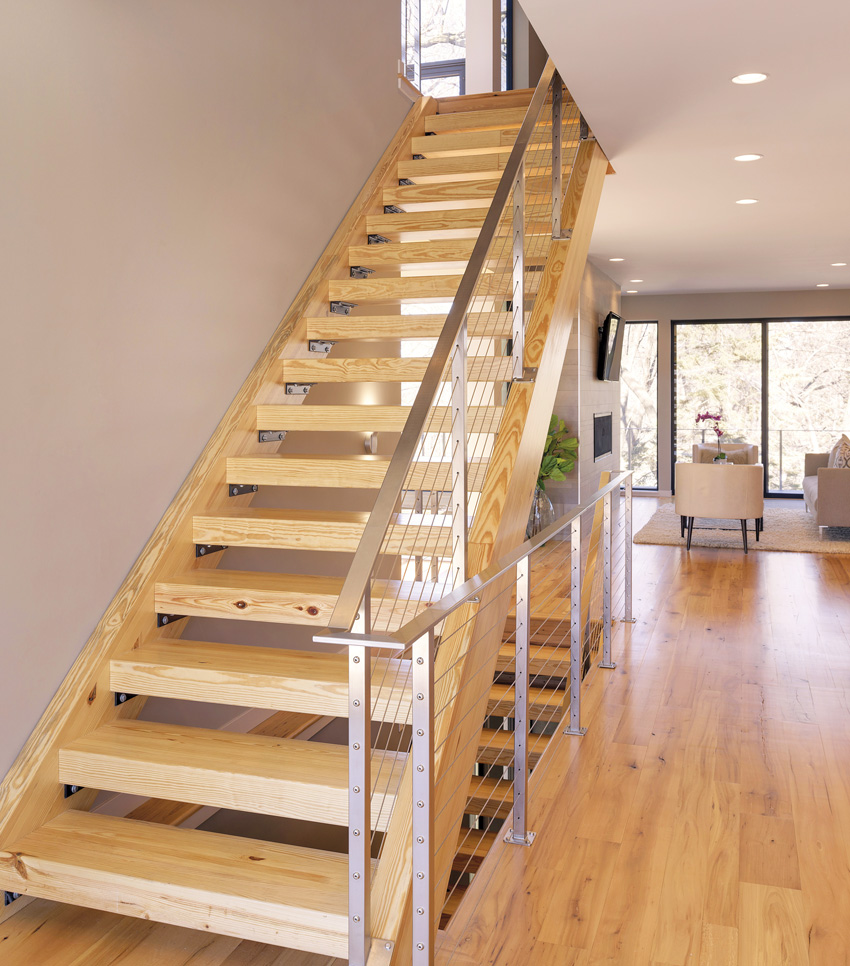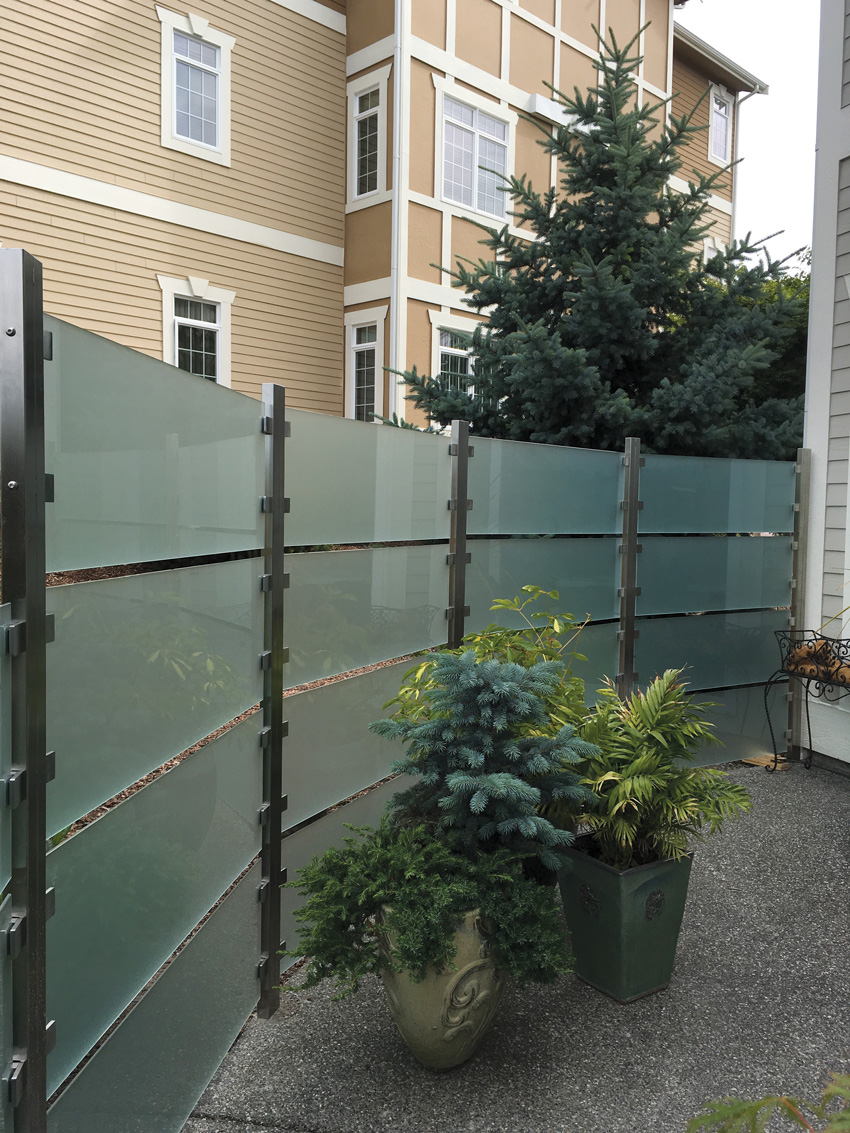Elements and Evaluation of Railing System Materials
The basic components of ornamental railing systems include the post material, the top rail, and the infill. Together, these components make up the main visual elements of a railing system. There are many different options for component materials, with either a single material for the whole system or with different materials combined for a railing that is unique to the specific building project. In addition to being designed to enhance the building’s aesthetic elements, railings should be designed for strength, durability, and safety.

Commonly used materials for railing posts include wood, aluminum, composites, or stainless steel. Wood posts wear well if maintained, but steel posts are more durable.
Railing Posts
Commonly used materials for railing posts include wood, aluminum, composites, or stainless steel. Wood posts provide a classic look, and as long as the wood is treated properly, they should be durable and have a relatively long lifespan. With wood posts, the force is directed to the joist and rim joist connections, and so builders need to pay close attention to post and joists framing procedures and select the most appropriate fasteners. There are a wide variety of framing techniques, each of which carries with it different challenges and costs.
Aluminum posts are commonly used in off-the-shelf systems because of their light weight and easy installation options, and because they tend to be more durable than wood or vinyl. They distribute the load well and are usually coated with a powder-coat finish to help prolong the life of the metal.
Composite railing posts tend to be a low-maintenance option that provides building professionals with a range of styles, colors, and design options. These systems are often sold to complement a manufacturer’s flooring products and thus offer a unified, finished look when installed.
Stainless steel posts tend to combine the best of all worlds in that they are strong, durable, and are usually engineered to exceed most local building codes. Stainless posts can be fabricated with a range of finishes, including brushed, polished, or powder-coated paint, and they resist corrosion very well.
Top Rail Materials
As with posts, the top rail is also usually made of wood, aluminum, composites, or stainless steel. While the top rails serve a different purpose than the posts (i.e., they do not deal with as much force as the posts), the material choices have similar pros and cons. For example, wood top rails make an aesthetic statement and work well for interior railing systems. However, even the best-treated wood will eventually give way to the elements when used outdoors.
Aluminum and composite materials are subject to wear and tear as well. Additionally, some composite materials require a supporting structural component to reduce the risk of deflection in the top rail. And, as with posts, stainless steel works as an ideal material because of its longevity, corrosion resistance, and finish options. For example, a brushed stainless or satin finish can be beneficial for top rails to retain less heat than highly polished surfaces, and thus ensure that the railings can be comfortably used even in the hot sun. This benefit takes into consideration the health, safety, and well-being of building occupants and the general public by allowing the rail to be used regardless of the time of year, all while allowing the designers the freedom of creative design for aesthetics.
Welded Connections
An easy way to identify a custom-made stainless steel railing are the connections between the systems components. Most custom-made stainless steel railings have welded connections. On the other hand, a tell-tale way of identifying a kit is the snap-on pieces. For example, a top mount post on a custom-made stainless railing system will be welded to the base plate. Welding is typically done by hand and allows the skill and craftsmanship of the fabricator to shine through. With a kit, the post material is cut to length and then fitted over a sleeve on top of the base plate. The post and base plate are secured together with either an adhesive, screws, or both. The same is true for end caps. At the end of the run on a custom-made stainless steel top rail, the end cap will be welded to the top rail. When built by a true craftsman, there will be no evidence of a joint. It will be polished to create the illusion of a single piece of solid metal. With a kit, the end cap is inserted into the top rail and secured with an adhesive.
Infill Materials
The infill is an important component of the system and can be made of cable or bar rails (typically stainless steel) that can be oriented vertically or horizontally, glass panels, wire mesh panels, or specialty materials unique to the project. Depending on the placement and purpose of the railings, health and safety considerations will also factor into material and infill choices. For example, a railing system on a multistory apartment building or hotel may include tempered glass panels as infill to provide a solid physical barrier between the decks and the ground. Alternatively, a homeowner who installs a new deck in their yard may desire a railing that provides a clear line of sight to the yard without the frequent cleaning required of glass and, in this case, cable rails may be the perfect solution. Or vice-versa. In short, the project needs will determine the infill solution and the material.

Glass as an infill material can help provide a sense of privacy, security, and also, when clear, open up visibility for occupants.

